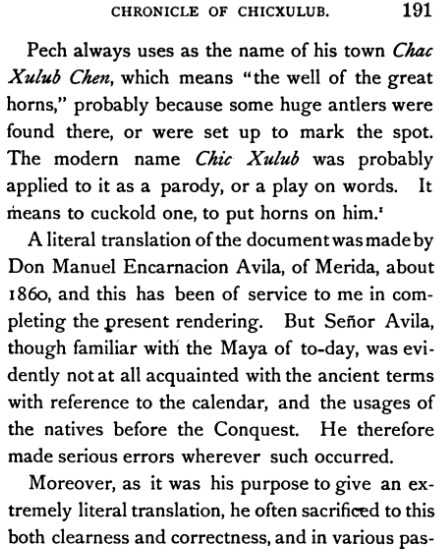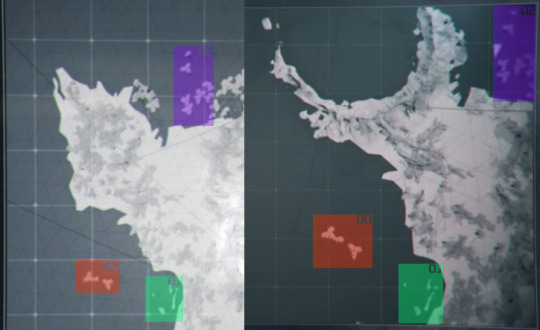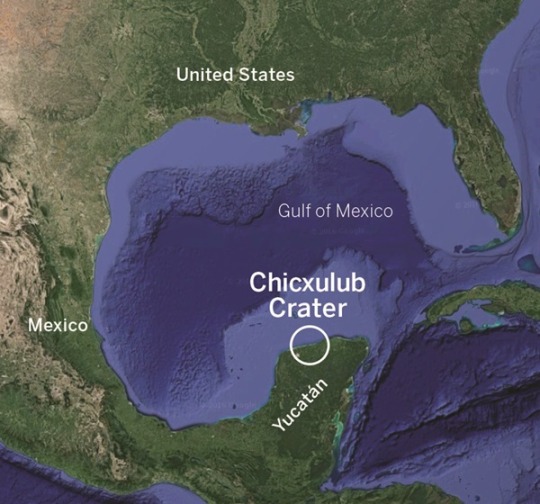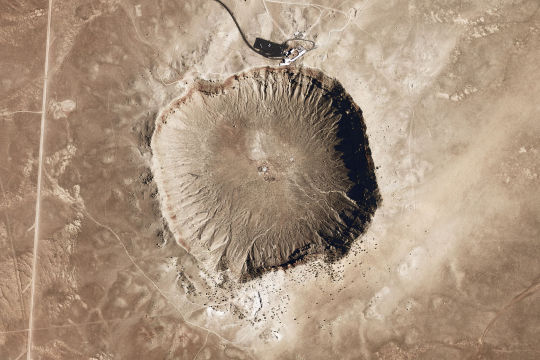#Chicxulub crater
Photo

The Chicxulub crater is a massive impact crater located on the Yucatan Peninsula in Mexico. It is believed to have been formed around 66 million years ago when an asteroid or comet approximately 10 kilometers in diameter struck the Earth. This impact is thought to have caused the extinction of the dinosaurs and many other species, and it also had a profound impact on the evolution of life on Earth.
906 notes
·
View notes
Text
unrelated but does anyone else think google's little bit when you search "Chicxulub Crater" is just a wee bit macabre
291 notes
·
View notes
Text
Dinofact #20
The most supported theory of the cause of the Cretaceous-Paleogene Extinction Event is the bolide impact hypothesis, which states that most the dinosaurs (excepting aves, modern-day birds) were extincted by a meteor impact. This theory, proposed by Walter Alvarez, Luis Alvarez, and colleagues in 1980, is supported by increased iridium deposits worldwide and the Cretaceous-Paleogene boundary, as well as shocked quartz, also found worldwide. In 1991, a massive crater measuring 180 km (110 mi) wide was discovered in the Yucatán Peninsula of southeastern Mexico. Evidence suggests that an extraterrestrial projectile approximately 5 to 15 kilometers (3 to 9+1⁄2 miles) wide impacted the site 66 million years ago, causing a chain of tsunamis, earthquakes, wildfires, and other disasters, that led to an "impact winter", leading to the extinction of all dinosaurs except for grain-eating birds.
Sources: wikipedia, the Smithsonian Magazine
#dinosaur#dinosaurs#paleontology#birds#extinction#dinosaur extinction#extinction event#cretaceous–paleogene extinction event#walter alvarez#luis alvarez#chicxulub#chicxulub crater#chicxulub impact#yucatan#yucatán#yucatan peninsula#yucatán peninsula#mexico#southeast mexico#trivia#fun facts#dinosaur fun facts#dinosaur trivia#13th#september#2022#september 13th#september 2022#september 13th 2022
7 notes
·
View notes
Link
3 notes
·
View notes
Text
The team’s simulations show that the impact tsunami radiated mainly to the east and northeast into the North Atlantic Ocean, and to the southwest through the Central American Seaway (which used to separate North America and South America) into the South Pacific Ocean.
The team’s simulations show that the impact tsunami radiated mainly to the east and northeast into the North Atlantic Ocean, and to the southwest through the Central American Seaway (which used to separate North America and South America) into the South Pacific Ocean.
1 note
·
View note
Photo

The Mexico crater is called the ‘Chicxulub Crater’, which I’m just looking up the now. Apparently the asteroid wiped out around 75% of all plant and animal life which then existed on the planet, as well as all non-avian dinosaurs. Which is just crazy. That there were entirely different species we’ll never even know about.
The asteroid was approximately 6 miles in diameter. It left a crater around 110 miles in diameter and 12 miles deep.
The kinetic power of the collision was equivalent to 100 teratons of TNT, which is over 4.5 billion times the strength of the atomic bomb dropped on Hiroshima. And the impact ensued winds of 620 mph near the blast’s center.
Tsunamis resulting from immediate impact reached heights of nearly 1.5 kilometers (0.93 m). Land sediment dispersals were detected 6000 miles away from the impact point.
Clouds of hot ash, dust and steam arose from the crater. Some of them escaped into space, only to return to the Earth’s orbit and then reignite on re-entry, and fall back on the planet’s landmass, causing wildfires in 70% of global forests.
^ just a few cool facts.
0 notes
Note
What's a place you want to travel to someday?
EVERYWHERE I love traveling so much I want to see everything
#I really want to go to mexico and the Yucatán peninsula#because the Chicxulub crater is beneath it even though it’s no longer visible I just want to Know it’s there#aya asks
0 notes
Text
List of impact craters on Earth
some light reading for you
#chicxulub my beloved#but the kaali craters get a special mention for apparently being recorded by estonian folklore
1 note
·
View note
Text
So the dinosaurs were wiped out because an asteroid called the Chicxulub impactor hit the Earth 66 million years ago, forming the Chicxulub crater. However, the name came from the neighboring town of Chicxulub. And, as it turns out...

In other words, the dinosaurs were killed by a big cuck joke.
572 notes
·
View notes
Text
"the chicxulub crater isnt cool" is sort of like one of those logical paradoxes. like saying all Xes with Y do not have Y. doesnt make sense
57 notes
·
View notes
Text
Rubicon's Second Extinction Event:
Why is this never mentioned again?
After defeating Balteus, we're treated to a beautiful Coral-tinted sunset and told later that the Coral explosion we triggered vaporized a whole section of northwestern Belius. What's wild is that an explosion of that magnitude, capable of vaporizing solid rock, is pretty analogous to the asteroid impact that killed the dinosaurs.

That cataclysm generated mega-tsunami that were over 300 feet high that left their sedimentary mark deep into what is now Texas, spawned earthquakes that are hard to even imagine, caused gusts of wind estimated at over 600 mph, and of course sent dust into the atmosphere that ultimately caused the K-Pg extinction event that wiped out the non-avian dinosaurs as the entire global food web collapsed.

Looking at the map of Belius, the crater left behind is similar in scope to the Chicxulub impact crater on the Yucatan peninsula, so even though it wasn't caused by a meteor, the effects of such an explosion should be broadly similar. Tsunamis should have wiped out any coastal installations and crushed settlements miles inland, entire Grids should have collapsed, and it's likely a storm of earthquakes would have followed as the stress profiles of faults all over Rubicon suddenly shift.
Meaning that an extinction-level event happens within a short time after 621's arrival and, in proper corporate fashion, is never mentioned again. Rubicon is already a dead world for all intents and purposes, and now the corpse of this dead planet is being pummeled before the real fighting even begins.
#armored core#armored core 6#armored core vi#science fiction#scifi#armored core series#fires of rubicon#mech#mecha
160 notes
·
View notes
Note
How much of the Gulf is made by the impact crater? I know on the Mexican coast it slopes gradually, so some of it is the natural formation.
the actual impact crater was only ever about 112 miles wide and 10 miles deep, but it weathered away fairly quickly so that most of it is no longer visible to the naked eye, which is why it took so long to FIND the dang thing in the first place.
and this isn't unusual! unlike every other planet and moon in the solar system, Earth has an active water cycle that means that no meteorite crater really sticks around for long. the most famous large meteorite craters you've probably heard of here are actually SHOCKINGLY young, geologically speaking, mostly well under a million years old.

this guy is only 50,000 years old. baby! baby boy!!
the Chicxulub Impactor slammed down to Earth 66 million years ago, so it's not really much of a surprise that there's nothing left to see there unless you happen to own a military-grade spy satellite or a ground radar scanner.
1K notes
·
View notes
Note
So is the asteroid impact now the accepted theory for what happened to nonavian dinosaurs? I remember some time ago some scientists were debating if dinosaurs(minus birds) were still even around by the time the asteroid arrived; claiming they were already in decline due to diseases or some other natural reason. Their reasoning being they didn't find anything of the nonavian dinosaurs up to that point…which I feel is kind of poor reasoning since there's no way of finding fossils every single nonavian dinosaur that ever lived to begin with.
Yeah that's been debunked. In truth the Maastrichtian was a vibrant time for prehistoric life, and while some places had declines in diversity, it was not out of the norm - could be preservation bias, could be just a dip, which nonavian dinosaurs had had many times prior to that point and bounced back. But that asteroid explains the patterns of extinction we see very well, and why the nonavians are no longer with us.
34 notes
·
View notes
Text
WHO decided the chicxulub crater's rock was the CEO of sex. Who did this.
40 notes
·
View notes
Text
a heretofore unknown species of girl has been discovered in chicxulub impact crater
27 notes
·
View notes
Text
Drop what you're doing and google Chicxulub crater (the impact site of the asteroid that most likely caused the extinction of the dinos). Something fun happens!
80 notes
·
View notes